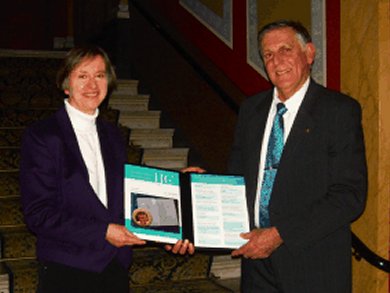The discovery of quasicrystals by Dan Shechtman (pictured), Technion–Israel Institute of Technology, Haifa, Israel, brought about a paradigm change in chemistry, physics, and materials science. Quasicrystals broke the crystallographic restriction that stated that crystals cannot have certain forbidden symmetries, such as 5-fold rotation.
The impact of Shechtman’s discovery of 5-fold symmetry in aluminum-manganese alloys was recognized last year when he won the Nobel Prize in Chemistry. To celebrate his achievement and to show how far quasicrystals have come since 1982, the Israel Journal of Chemistry has dedicated a special issue to this topic. It is edited by Professor Patricia Thiel (pictured), Iowa State University, USA, who writes in her Editorial that the scientific community has gone through three main phases with regard to quasicrystals.
In the first phase in the 1980s, interest was stimulated by controversy. The second phase in the 1990s was driven by interest in the physical properties — whose measurement was facilitated greatly by the discovery of thermodynamically stable phases and the ability to grow single grains — along with possible applications of quasicrystals. In these first two phases, the community mainly focused on quasiperiodic alloys and intermetallics. The third phase in the 2000s has been marked by diversification into new but strongly related topics, such as quasiperiodic polymers, quasiperiodic nanocomposites, guided materials discovery, photonic and phononic systems, and complex — but crystalline — metallic alloys.
In all three of these phases, much excellent basic research has been carried out on a wide variety of topics, including pure mathematics, materials science and engineering, chemistry, physics, and surface science.
Image: As a symbolic gesture, the cover and a list of articles and authors were presented
to Professor Daniel Shechtman on the eve of the Nobel Prize Ceremony by Guest Editor
Professor Patricia A. Thiel on behalf of Israel Journal of Chemistry. © Wiley-VCH
- Special Issue: Quasicrystals,

Israel J. Chem. 2011, 51(11-12). - Guest Editorial: Quasicrystals,
P. A. Thiel,
Israel J. Chem. 2011, 51(11-12), 1141-1142.
DOI: 10.1002/ijch.201100127




